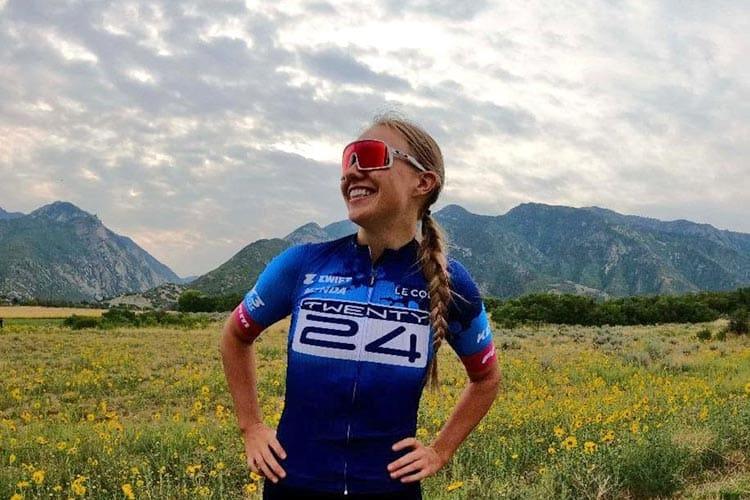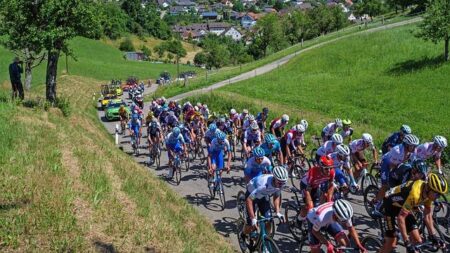In a remarkable display of resilience and determination, Melisa Rollins defied the odds to secure a sixth-place finish at the Sea Otter Gravel race, despite suffering from the severe challenge of breaking both wrists just weeks prior to the event. Known for her grit and formidable presence in the competitive cycling scene, Rollins showcased her unyielding spirit, navigating the grueling terrain with a “survival mode” mentality that captivated both fans and fellow cyclists alike. Her extraordinary journey to the finish line not only highlights her personal tenacity but also serves as a powerful testament to the indomitable human spirit in the face of adversity. As Rollins continues to push the boundaries of what is possible in the sport, her story is a source of inspiration for athletes and enthusiasts at all levels.
Melisa Rollins Overcomes Adversity to Secure Sixth Place at Sea Otter Gravel
In an extraordinary display of resilience, Melisa Rollins has captured the attention of the cycling community by securing a commendable sixth place at the highly competitive Sea Otter Gravel event, despite the daunting challenge of racing with both wrists fractured. Her journey to the finish line exemplifies the true spirit of determination, as she pushed beyond her physical limits in what she described as “survival mode.” Rollins recounted her mental struggle during the race, where focus and sheer willpower became her greatest allies on the rugged terrain of the gravel course.
Rollins initially faced a harrowing setback just weeks prior to the event, suffering injuries that would sideline most athletes. However, her unwavering dedication and remarkable training regimen allowed her to adapt her technique to cope with her injuries. Key factors contributing to her impressive performance included:
- Intense rehabilitation: A focused recovery plan ensured she regained enough strength to compete.
- Strategic pacing: Rollins employed smart pacing tactics to conserve energy and manage pain during the race.
- Mental fortitude: A strong mental game kept her motivated amidst the physical challenges.
As she crossed the finish line, Rollins not only marked a personal triumph but also inspired fellow cyclists facing their own adversities. Her story serves as a powerful reminder of the indomitable human spirit and the relentless pursuit of one’s goals, even in the face of overwhelming difficulty. The event not only showcased her athletic prowess but also underscored the importance of grit and determination in the world of competitive sports.
The Impact of Resilience and Strategy in Competitive Cycling
The recent performance of Melisa Rollins at the Sea Otter Gravel race is a remarkable testament to the power of determination and strategic thinking in the world of competitive cycling. Despite breaking both wrists just days before the event, Rollins showcased an incredible level of resilience that propelled her to a sixth-place finish. Her commitment to pushing through adversity underscores a critical aspect of competitive sports: the mental strength required to endure physical limitations. This incident serves as a powerful reminder that success is often forged in the face of challenges, and that the will to compete can overshadow even the most daunting setbacks.
Rollins’ performance was not only about personal endurance but also about the strategic choices she made during the race. Understanding the limits of her injuries, she opted for a pacing strategy that allowed her to conserve energy for crucial segments of the race. Key elements of her approach included:
- Selective Aggression: Knowing when to hold back and when to push the pace was essential for her survival and competitiveness.
- Focus on Technique: Despite her injuries, Rollins utilized her technical skills to navigate challenging terrains effectively.
- Adaptability: She demonstrated an ability to adapt her riding style to accommodate her physical capabilities that day.
This blend of resilience and strategy not only brought her a commendable finish but also highlighted the importance of mental fortitude in competitive cycling, ultimately inspiring fellow athletes to approach their own challenges with a similar mindset.
Essential Recovery Techniques for Athletes Facing Serious Injuries
In the high-stakes world of competitive sports, injuries can sometimes be as inevitable as they are devastating. For athletes like Melisa Rollins, who recently celebrated her impressive sixth-place finish at the Sea Otter Gravel after enduring the challenge of breaking both wrists, effective recovery techniques are paramount. To navigate the path back to peak performance, athletes must adopt comprehensive recovery strategies that not only focus on physical healing but also mental resilience. Key elements of effective recovery include:
- Scheduled Rest: Prioritizing downtime allows the body to repair itself naturally, crucial for long-term recovery.
- Rehabilitation Programs: Engaging with physical therapists to create tailored rehabilitation plans fosters strength recovery and mobility.
- Nutrition Optimization: A balanced diet rich in protein and vitamins supports tissue repair and overall health.
- Mental Health Support: Incorporating mindfulness practices and psychological support can enhance mental well-being during the often demoralizing recovery phase.
Moreover, tracking progress through structured evaluations not only keeps the athlete motivated but also helps adapt recovery plans as needed. To illustrate the vital phases of recovery, the following table outlines essential milestones in Melisa’s journey:
| Phase | Timeframe | Focus |
|---|---|---|
| Immediate Recovery | 1-2 Weeks | Rest, pain management, basic mobility exercises |
| Rehabilitation | 3-6 Weeks | Targeted strength training and flexibility exercises |
| Gradual Return | 6-12 Weeks | Building endurance and skill-specific drills |
The Way Forward
In a remarkable display of resilience and determination, Melisa Rollins secured a sixth-place finish at the Sea Otter Gravel event, despite battling through the pain of broken wrists. Her story not only exemplifies the tenacity of competitive athletes but also serves as a testament to the spirit of overcoming adversity in the face of daunting challenges. As Rollins continues to inspire fellow cyclists and enthusiasts alike, her journey underscores the unpredictable nature of sports and the extraordinary lengths athletes will go to compete at the highest levels. With her sights set on recovery and future races, the cycling community eagerly awaits her next chapter, one defined by unwavering grit and the will to thrive against all odds.











